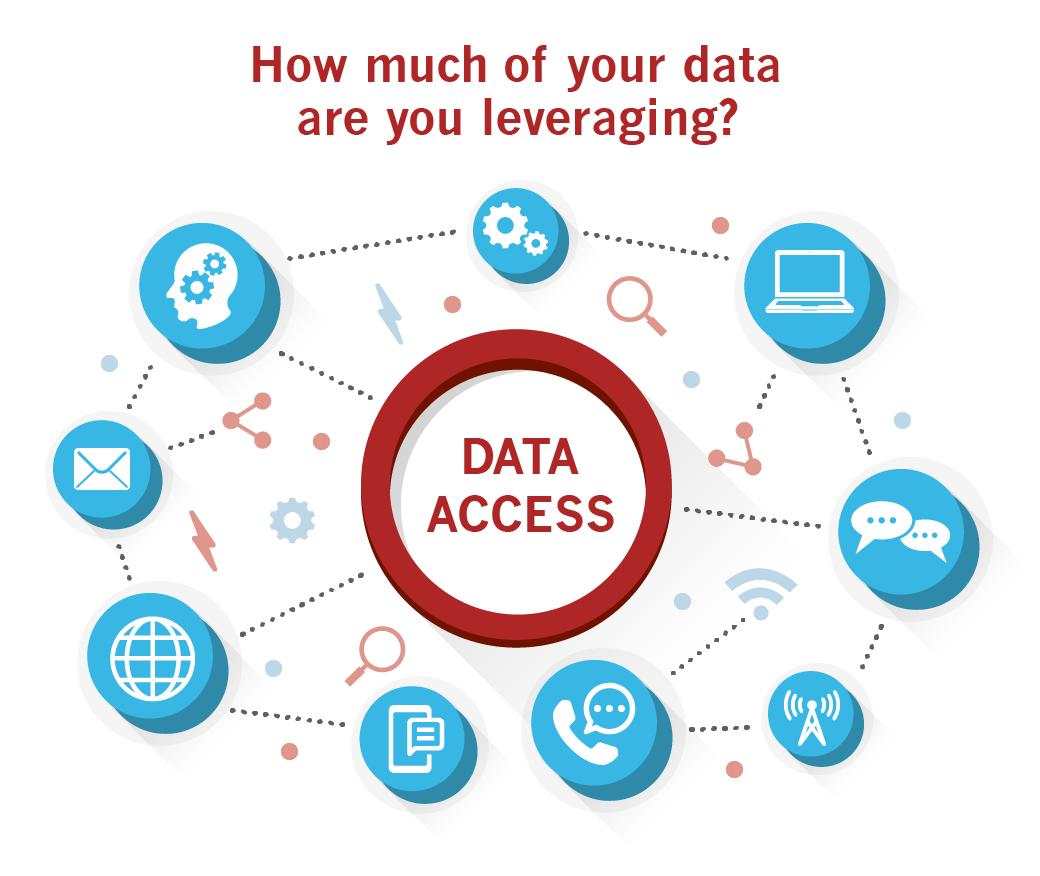How does a manufacturing organization deploy a corporate digital strategy without turning its business upside down? For large, enterprise organizations, it makes sense to start with your biggest pain point. In other words, what part of the organization has the most opportunity to improve and impact your go-to-market efficiency? Let's evaluate an enterprise B2B through four distinct lenses: (1) Operations, (2) Customer Interface, (3) Business Processes, and (4) Data Access.

Harvard Business Review's recent cross-industry study shows that on average, less than half of an organization's structured data is actively used in making decisions and less than 1% of its unstructured data is analyzed or used at all. (What's Your Data Strategy, HBR.com, June 2017) Increasingly, unstructured data is the majority of new data a business can harness and use to inform its business decisions. Examples of unstructured data include Emails, Word Processing Files, PDF files, Spreadsheets, Digital Images, Video, Audio, and Social Media Posts.
Establishing a single source of data about customers, suppliers, sales, and products will create the solid foundation needed to provide deeper insights into your business. This foundation enables an organization to achieve compliance, regulatory, quality, and governance standards. Starting with this data foundation, a company can then assess its data integrity, ease of access, and standardization for gaps and inconsistencies. When the gaps are closed, it becomes much easier to provide enhanced data analytics, predictive modeling, and visualization of business insights – all of which are needed to improve competitive position and profitability.
When Trellist works with its clients on Data Access, the following check list is a helpful tool for a company to self-rank its performance:
- We have a data strategy in place that is actively managed by a leader or team
- Marketing and IT work closely together to deploy the best platforms that ensure data is accessible and relevant
- Our organization has prioritized its data needs to ensure alignment with and delivery of corporate goals
- Our data and insights are manageable, accurate, and timely
- We continually look for ways to reduce barriers to data and time delays
- Leadership is confident in its decision making as it is underpinned by robust data
- Our governance policy ensures that we keep our customers' and suppliers' data confidential and that we act responsibly
- The data we track enables a positive customer experience, better product design, robust sales forecasts, and market insights
- Our platforms are flexible and adaptable for future data needs
- Our teams find the data they need and spend less than 1 hour/ week looking for "lost" files
Collecting and storing files is insufficient as a data strategy. Each document will need to be categorized and stored in an appropriate location. Careful attention is then required in order to make finding and accessing unstructured and structured data easy; typical text search may not be sufficient. Version control and archiving of documents will need to be managed, ensuring access to documents remains in place throughout its lifetime. Finally, establishing authorization protocols to access data is needed to protect security and integrity. A way to visualize this is a tidy filing cabinet with all folders neatly organized and labeled so that information is easily discovered. Out of date information is quickly discarded so only the latest version is accessible and files that need controlled access will be kept in the locked drawers.
In order to leverage unstructured data, it will need to be categorized, parsed for insights, and reformatted so that it can be organized in a way that is searchable. There are multiple software tools to help with this process. These tools provide insights
by collating disparate data sources, visualizing trends and dependencies, and creating an easy-to-use dashboard. If you see an opportunity to enhance your data access, Trellist can help your organization transform its data into actionable insights
without turning your business upside down.
Want to learn more? Read the rest of our Digital Strategy for Enterprise B2B series covering topics, such as: (1) Operations, (2) Customer Interface, (3) Business Processes, and (4) Data Access. If you have questions or would like to learn how Trellist can impact your business with a Digital Strategy, please contact Trellist Consulting.











